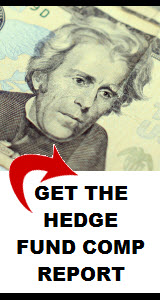The curious concept of a central bank employing negative interest rates to affect desired economic outcomes is not the theoretical musing of an eccentric economics professor. At least one non-voting FOMC committee member suggested that a below zero fed funds rate might be appropriate for the balance of 2015 and beyond.
In remarks subsequent to the FOMC’s most recent meeting, Fed Chair Janet Yellen was emphatic that a negative fed funds rate “was not something that we considered very seriously at all today.” The operative word being—today!
Could This Happen Here?
The short answer is yes. A move to below zero rates is not without precedent. Early in 2015, Switzerland’s rates plunged into negative territory, as the Swiss National Bank (SNB) implemented a target range of -0.25 to -1.25.
The SNB took this action due to stem the alarmingly rapid rise in the value of the Swiss franc, which threatened to tank Switzerland’s export businesses. The Swiss National Bank’s efforts to devalue the Swiss franc via negative rates has been only marginally successful, prompting the SNB to eliminate select existing exemptions from negative rates for certain public accounts. Rather than abandoning the sub-zero tactic, some believe the SNB is prepared to double-down on the policy, pushing rates further into the negative.
Another example is the Euro Interbank Offered Rate, which is also in negative territory, not because the European Central Bank wanted to devalue the euro, but because it wanted to increase the velocity of money flowing among euro zone countries by providing an incentive to keep the money out of its banks. In theory, this will enhance investment and spending.
Neither example of negative rate implementation has been in force long enough to adequately judge its merits but, preliminary results seem less than spectacular. The value of the Swiss franc has proven difficult to suppress and economic growth in the European Union remains lackluster.
While Chair Yellen didn’t rule out the possibility of considering a negative rate move, she did not cite any current economic scenario that might be resolved by moving the fed funds rate into the negative.
Mounting Tensions
At the annual meeting of the International Monetary Fund recently held in Lima, Peru, delegates made it clear to their American colleagues that the “dithering” must stop. Emerging economies, battered by undulating currency valuations and wild market swings, are making it clear that enough is enough!
Germany’s central bank is also green-lighting a fed rate hike but, it is too early to know if that position is broadly supported by the European Central Bank.
Hedge Fund Jobs
The bottom line is this—a hedge fund is, first and foremost, a business and like any enterprise, prefers stability to chaos … certainty to uncertainty. This is particularly true with regard to hiring new employees. While hedge fund employment opportunities will always exist, the forces at play in the current economy are not conducive to abundant opportunities in the hedge fund industry or the broader financial sector.
Any move by the FOMC in the direction of negative rates would be infinitely more destructive to perceived stability than the relatively benign course of indecisiveness that is its current hallmark.






Comments on this entry are closed.